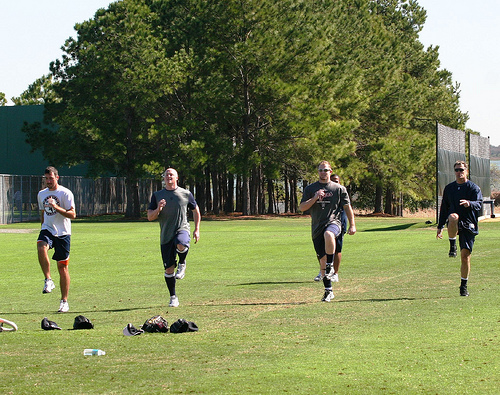An article at the Wall Street Journal delved into Jeremy Bonderman’s first inning struggles. Former pitching coach Bob Cluck wondered whether or not Bonderman’s struggles are attributable to umpires needing an inning to adjust to the movement on Bonderman’s pitches.
The stats seem to support this theory. The last seven times Mr. Bonderman faced an ump for a second or third time in a season, he allowed first-inning runs only once. On opening day last season — when the first three batters he faced all scored — the umpire behind the plate was Rick Reed, who hadn’t seen him in nearly a year.
Looking on a results basis probably isn’t the best way to determine this. But being able to check Bonderman’s called strike/ball rates in the first inning versus other innings, as well as factoring the first time an umpire sees him versus the second time, may be worth some effort. And then even expanding it beyond Bonderman to look for other pitchers who have similar movement on their pitches and if they have similar issues. The latter could be done with pitch f/x data and the former with retrosheet data. I’ll focus on the retrosheet piece for now.
Big View
The first thing I did was to look at Bonderman’s first inning ball and called strike rates compared to all other innings. I looked at all Bonderman data going back to 2003.
The differences are pretty minimal, especially the ratio of balls to called strikes. In fact the ratio indicates that Bonderman gets more calls earlier in the game – if at all.
First Timers
Next, I took at all the times that an umpire was behind the plate for the first time against Bonderman. If the theory holds true, there should be a bigger disparity.

We can see that a higher percentage of balls are called. We also see fewer called strikes in relation to the number of balls.
Return visits
Finally, a look at those who have called Bonderman games before.
A somewhat interesting dynamic with this group. The ratio is more favorable in the first inning, but a higher a percentage of balls are called as well.
On another note, Brian Gorman is the umpire who has called the most of Bonderman’s starts with six. Larry Vanover has done 5 Bonderman games.
Taking familiarity one step further, I also pulled out the times when an umpire was seeing Bonderman multiple times in the same season. This isn’t a common phenomenon with it only happening 23 times in Bonderman’s 5 seasons. So it’s a situation that will present itself a handful of times a year.
Things are certainly more favorable in the first inning for this situation. But that only seems to help in the first innings.
Conclusions
So is there anything to take from this data, does the specualtion hold up? I’d say that it is possible there is an effect for umpires seeing Bonderman for the first time ever. The rate of called balls, and overall rate of calling balls is highest for first timers in the first inning against Bonderman. The fact that the numbers in subsequent innings of that first start are in line with overall numbers does seem to indicate that the umpires do make an adjustment.
But otherwise the numbers are largely inconclusive. Given the in game variation for those seeing Bonderman repeatedly in a season seems to indicate that Bonderman has much more influence over these numbers than the umpires do – which really isn’t a shocker at all.
With pitch f/x data one could look for the frequency that pitches are called correctly by inning. But with only a partial season of data there isn’t enough to work with for the time being.

